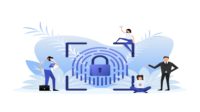Do software vendors care as much about security as you do?

For security professionals, there is something special about December 13. Is it the day we finally eradicated SQL injection, forever? Of course not. Perhaps it’s “International Security Worker Appreciation Day”? Also no. It is the day that FireEye and Mandiant released their shocking report about a previously unknown global intrusion campaign that would become known as SolarWinds. The report detailed an ongoing and almost unbelievable attack where malicious code was hidden deep inside the software updates of SolarWind’s popular Orion management software.
Over 18,000 SolarWinds customers had already downloaded the corrupted update. Many of them did it automatically, just like they did for hundreds of other software updates within their organizations and networks. The attackers were highly selective in what they chose to attack once given access through the SolarWinds breach. Many major corporations, as well as government agencies, had their data stolen and their networks compromised. It was one of the largest and likely the most costly breach of all time, especially since in the case of government agencies, the full extent of the damage has never been publicly shared.
And it all happened because people trusted the vendors within their software supply chain without properly verifying or vetting their activities.
The Massive Shift to Supply Chain Security
Once the alarm was raised, companies, organizations and government agencies were quick to respond. Of course, the SolarWinds breach was stopped, but the attack also exposed the dangers of an unregulated and unmonitored software supply chain. While the SolarWinds incident was quickly resolved once discovered, the implications regarding how the supply chain was used as an attack vector are still ongoing. If nothing else good came of the attack, it at least put the spotlight on a critical yet overlooked aspect of cybersecurity.
One of the most high-profile responses to the SolarWinds attack was President Biden’s Executive Order on Improving the Nation’s Cybersecurity. The order is one of the most comprehensive cybersecurity directives ever issued in the United States. It demands better cybersecurity at agencies, and for those who do business with the government, advocates advanced protections like zero-trust networking, and stresses the need for software supply chain security.
While the EO is specific to the government, other groups have also started to emphasize the importance of supply chain security to prevent another SolarWinds-style attack. For example, Palo Alto recently released its Unit 42 Cloud Threat Report entitled “Secure the Software Supply Chain to Secure the Cloud.” The report states that no cloud deployment is totally safe without software supply chain security. And the Cloud Native Computing Foundation agrees, releasing a white paper detailing critical software supply chain best practices that must be followed in the wake of SolarWinds.
It’s safe to say that the past year has been one of the most rapid shifts in cybersecurity standards we have seen as an industry, and while not mandatory, it should be a goal for all organizations to follow suit and scrutinize vendor security practices as though they are part of their internal security program.
What Can Organizations Do To Improve Their Software Supply Chains?
The situation has many vendors rightly asking what they can do in order to protect their own supply chains. What can an organization do to ensure that its vendors care as much about cybersecurity as they do?
The EO specifically outlines the impact of software developers, and the need for them to have verified security skills and awareness, an area that tends to be forgotten in an industry that is tools-obsessed rather than a focus on people-led defense through key security skills.
It’s become apparent that any comprehensive approach to cybersecurity these days must include a detailed third-party risk assessment, covering the technical security controls in place and an assessment of how partners view governance, risk, and compliance within their own organizations.
All third-party assessments should include assurances and detailed plans about how those in your software supply chain plan to release secure program updates with verified certificate signatures, and how they will help to manage the identities of all of their software and devices. It should also demonstrate a clear path for cryptographic upgrades and updates for their products.
And now that developers are finally being seen as a critical component of software supply chain security, any assessment should also include a report detailing how they encourage secure coding and continuous improvement within their development community, and, ideally, benchmarking of their skills and current training. We know that emphasis on developer upskilling is improving, but a recent survey indicated that 48% of developers have admitted to knowingly shipping vulnerable code.
Factors such as time constraints, and the reality that security simply isn’t a top priority (nor a measure of success) in their world, contribute to an environment where code-level vulnerabilities are not addressed as early as they should be. If we’re to stop them from infecting the software supply chain, every organization needs to commit to a more developer-friendly security program.
Next Steps?
Risk assessments are critical because, if organizations use software from a vendor that has security problems, they will inherit them into their ecosystem and bear the consequences. However, organizations should also realize that it’s possible that their vendors might actually be more secure and may even be better at supporting their developer communities.
You can use a third-party risk assessment as a secondary way of evaluating the organization’s security. If a vendor handles some aspect of security better than the organization is internally, security practitioners can adopt methods to improve their organization.
Finally, the next big step in really improving the software supply chain is to implement secure coding certifications for developers. Having a good plan in place is the first step, but verification that it’s actually being followed and helping to produce secure code is also a necessity.
Until we reach a point where developer enablement in secure coding is the norm, we’ll always be behind in closing windows of opportunity before threat actors can peer in.
This article originally ran in Today’s Cybersecurity Leader, a monthly cybersecurity-focused eNewsletter for security end users, brought to you by Security magazine. Subscribe here.
Looking for a reprint of this article?
From high-res PDFs to custom plaques, order your copy today!






